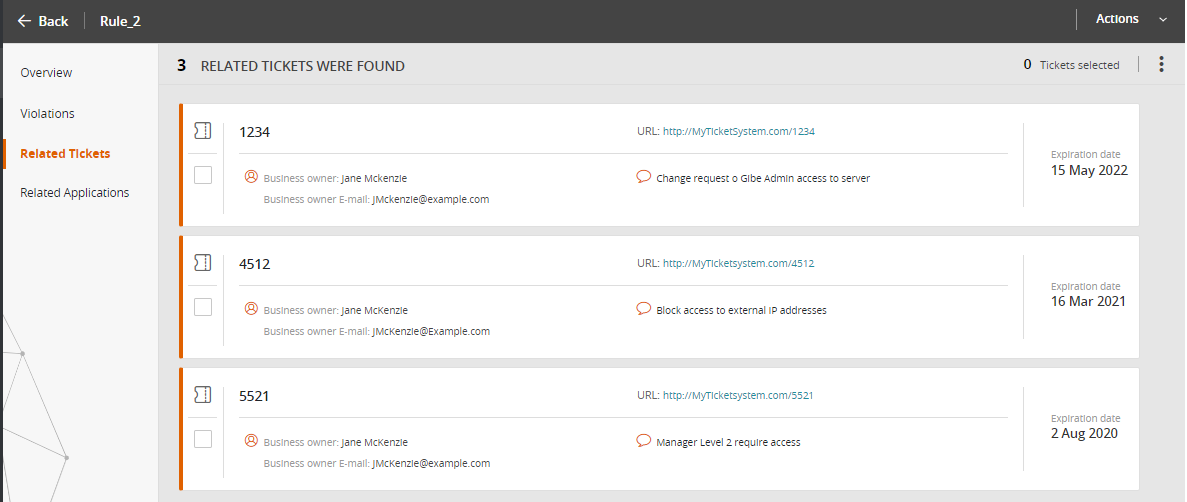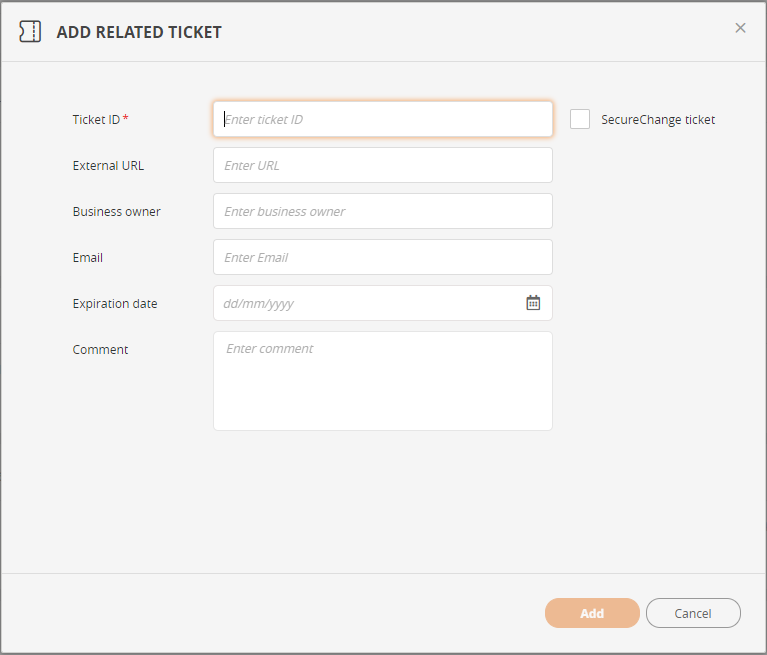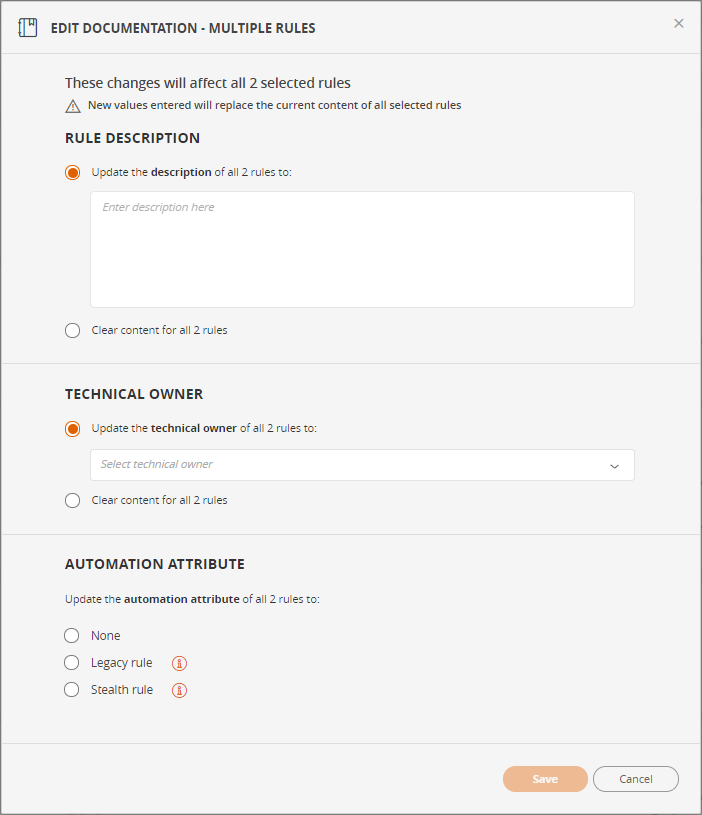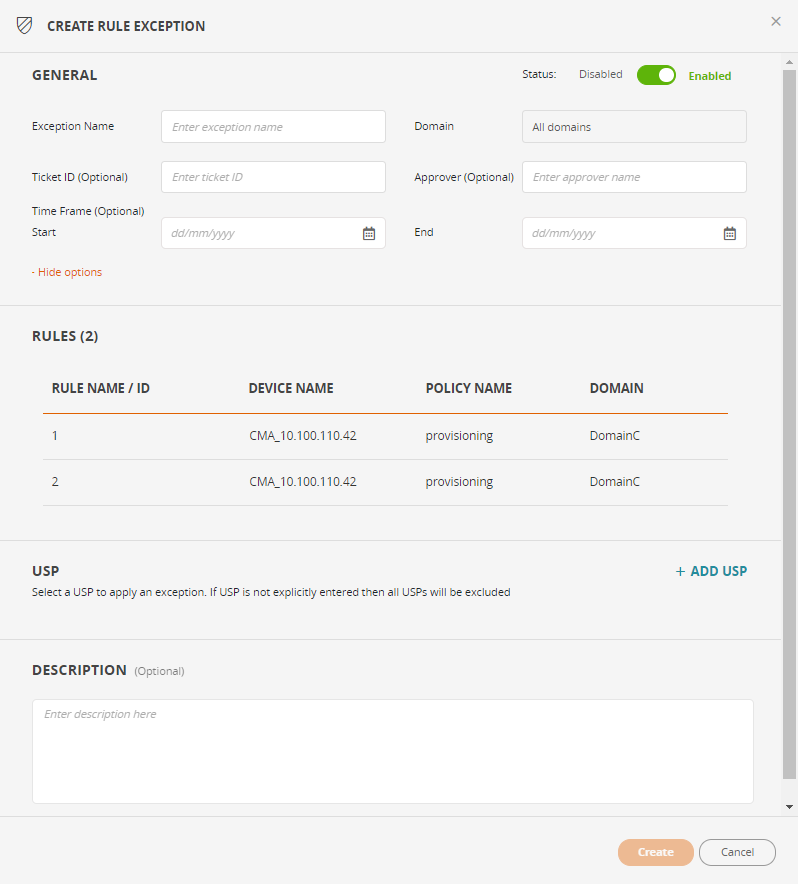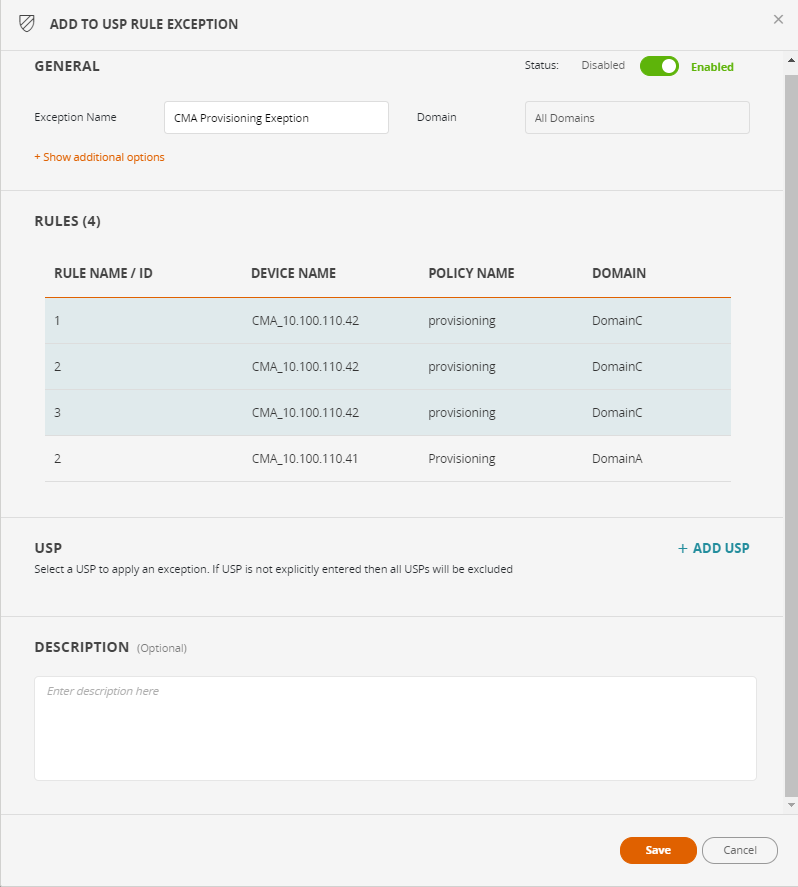On This Page
Rule Related Tickets
Overview
A ticket is a change request or other rule related activity that is tracked in a ticketing system. Linking ticket information to a rule may be helpful for auditing as it allows you to track why each change was made, who requested the change, and who authorized it. You can manually enter this information into a related ticket in the Rule Viewer or include a URL which links the ticket in your ticketing system.
A rule can have multiple related tickets associated with it, and a related ticket can be associated with multiple rules. Tickets can be automatically mapped to rules if they have traffic which intersects with a rule, for example in an Access Request. Rule recertification tickets can periodically review and recertify all tickets related to a rule.
Each related ticket can have the following information:
- Ticket ID (required)
- External URL
- Business Owner
- Expiration date
- Comment
What Can I Do Here?
- Add a Related Ticket
-
You can also add or edit tickets or documentation using GraphQL.
Add a Related Ticket
To add a new related ticket, click the Options button  select Add Related Ticket and add the required information.
select Add Related Ticket and add the required information.
If SecureTrack is connected to SecureChange, you can enter the number of an existing ticket in SecureChange and click SecureChange Ticket to link to the SecureChange ticket.
Edit or Remove a Related Ticket
To modify or remove a ticket, select the required ticket, click the Options button  and select Edit related ticket or Remove related ticket. You cannot remove automatically linked tickets.
and select Edit related ticket or Remove related ticket. You cannot remove automatically linked tickets.
Edit Rule Documentation
-
Select one or more rules.
-
From the Actions menu, select Edit Rule Documentation
-
Add or edit the following information:
-
Rule description - free text
-
Technical Owner - TOS Classic administrators can select any user from the list. Other users can assign only themselves.
-
Automation attribute - used by SecureChange Designer
- None - no automation attribute
- Legacy rule
- Stealth rule
-
Add Ticket to Rule
A ticket is a change request or other rule related activity that is tracked in a ticketing system. Linking ticket information to a rule may be helpful for auditing as it allows you to track why each change was made, who requested the change, and who authorized it. You can manually enter this information into a related ticket in the Rule Viewer or include a URL which links the ticket in your ticketing system.
You can add details of tickets to a rule or multiple rules, this allows you to track all rule-related information in the Rule Viewer.
-
In the Rule Viewer, select the checkbox for one or more rules.
-
From the Actions menu, select Add Related Ticket, and add the following ticket information:
- Ticket ID (required)
- External URL
- Business Owner
- Expiration date
- Comment
If SecureTrack is connected to SecureChange, select SecureChange Ticket to create the ticket in SecureChange.
Once you have added a ticket to a rule, in the Rule Overview you can click the Related Tickets link on the left to view details about all related tickets.
Create a USP Rule Exception
You can exempt specific rules from triggering a violation in the USP by creating a USP Rule Exception. These exceptions are useful for when:
-
You have to exempt certain rule violations for a limited period of time due to an urgent requirement.
-
You want to make an exception for specific devices. For example, if you have an HA configuration, and you don't want to receive duplicate violation notifications from the standby devices.
-
In the Rule Viewer, select the checkbox for one or more rules.
-
From the Actions menu, select Create USP Rule Exception.
-
In the General section, enter the following information:
-
Exception Name: The name of the USP Rule exception
-
Ticket ID (Optional): The Ticket ID that relates to this exception.
-
Approver (Optional): The person who approved the USP rule exception.
-
Time Frame (Optional): The time frame in which the USP Rule exception is valid
-
-
In the USP section, click +Add USP to select a USP to which to apply the rule exception. If you don't select a USP, the rule exception will apply to all USPs.
-
In the Description (optional) section, enter a description of the USP rule exception.
-
Click Create.
Add a Rule to an Existing USP Rule Exception
-
In the Rule Viewer, select the checkbox for one or more rules.
-
From the Actions menu, select Add to Existing USP Rule Exception.
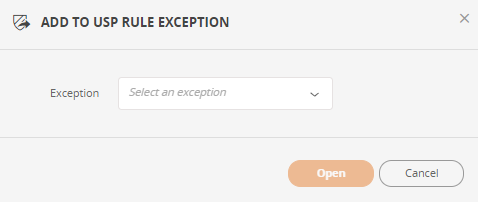
-
In the Exception field, select the USP Rule Exception, and click Open.
-
Review the information in the USP Rule Exception.
In the Rules section, the rules which you just added are highlighted in blue.
-
Click Save
How Do I Get Here?
From the menu, go to Browser ![]() > Rule Viewer > click on a rule > Related Tickets.
> Rule Viewer > click on a rule > Related Tickets.
